Correlation between Synthetic Aperture Radar Surface Winds and Deep Water Velocity in the Amundsen Sea, Antarctica
Abstract
:1. Introduction
2. Data
2.1. Wind and Ice Concentration from ERA-Interim
2.2. Deep Water Velocities from S1 Mooring
2.3. SAR Data
3. Methodology
4. Results and Discussion
4.1. SAR Wind Maps
4.2. Correlations between Zonal Winds and Deep Water Velocities
5. Conclusions
Conflict of Interest
References
- Shepherd, A.; Wingham, D.J.; Mansley, J.A.D.; Corr, H.F.J. Inland thinning of Pine Island Glacier, West Antarctica. Science 2001, 291, 862–864. [Google Scholar]
- Shepherd, A.; Wingham, D.; Rignot, E. Warm ocean is eroding West Antarctic Ice Sheet. Geophys. Res. Lett 2004, 31, 1–4. [Google Scholar]
- Pritchard, H.D.; Arthern, R.J.; Vaughan, D.G.; Edwards, L.A. Extensive dynamic thinning on the margins of the Greenland and Antarctic ice sheets. Nature 2009, 461, 971–975. [Google Scholar]
- Pritchard, H.D.; Ligtenberg, S.R.M.; Fricker, H.A.; Vaughan, D.G.; Van Den Broeke, M.R.; Padman, L. Antarctic ice-sheet loss driven by basal melting of ice shelves. Nature 2012, 484, 502–505. [Google Scholar]
- Klinck, J.M.; Hofmann, E.E.; Beardsley, R.C.; Salihoglu, B.; Howard, S. Water-mass properties and circulation on the west Antarctic Peninsula Continental Shelf in Austral Fall and Winter 2001. Deep Sea Res. Part II: Top. Stud. Oceanogr 2004, 51, 1925–1946. [Google Scholar]
- Moffat, C.; Owens, B.; Beardsley, R.C. On the characteristics of Circumpolar Deep Water intrusions to the west Antarctic Peninsula Continental Shelf. J. Geophys. Res. C: Oceans 2009, 114, C05017. [Google Scholar]
- Dinniman, M.S.; Klinck, J.M.; Smith, W.O. A model study of Circumpolar Deep Water on the West Antarctic Peninsula and Ross Sea continental shelves. Deep Sea Res. Part II: Top. Stud. Oceanogr 2011, 58, 1508–1523. [Google Scholar]
- Walker, D.P.; Brandon, M.A.; Jenkins, A.; Allen, J.T.; Dowdeswell, J.A.; Evans, J. Oceanic heat transport onto the Amundsen Sea shelf through a submarine glacial trough. Geophys. Res. Lett. 2007. [Google Scholar] [CrossRef] [Green Version]
- Wåhlin, A.K.; Yuan, X.; Björk, G.; Nohr, C. Inflow of warm circumpolar deep water in the central Amundsen shelf. J. Phys. Oceanogr 2010, 40, 1427–1434. [Google Scholar]
- Jacobs, S.; Jenkins, A.; Hellmer, H.; Giulivi, C.; Nitsche, F.; Huber, B.; Guerrero, R. The Amundsen Sea and the Antarctic ice sheet. Oceanography 2012, 25, 154–163. [Google Scholar]
- Thoma, M.; Jenkins, A.; Holland, D.; Jacobs, S. Modelling circumpolar deep water intrusions on the Amundsen Sea continental shelf, Antarctica. Geophys. Res. Lett 2008, 35, L18602. [Google Scholar]
- Steig, E.J.; Ding, Q.; Battisti, D.S.; Jenkins, A. Tropical forcing of circumpolar deep water inflow and outlet glacier thinning in the amundsen sea embayment, west antarctica. Ann. Glaciol 2012, 53, 19–28. [Google Scholar]
- Wåhlin, A.K.; Kalén, O.; Arneborg, L.; Björk, G.; Carvajal, G.K.; Ha, H.K.; Kim, T.W.; Lee, S.H.; Lee, J.H.; Stranne, C. Variability of warm deep water inflow in a submarine trough on the Amundsen Sea shelf. J. Phys. Oceanogr. 2013. [Google Scholar] [CrossRef]
- Pedlosky, J. Geophysical Fluid Dynamics, 2nd ed; Springer-Verlag: New York, NY, USA; p. 1987.
- Christiansen, M.; Koch, W.; Horstmann, J.; Bay Hasager, C.; Nielsen, M. Wind resource assessment from C-band SAR. Remote Sens. Environ 2006, 105, 68–81. [Google Scholar]
- Carvajal, G.K.; Eriksson, L.E.B.; Ulander, L.M.H. Retrieval and quality assessment of wind velocity vectors on the ocean with C-band SAR. IEEE Trans. Geosci. Remote Sens. 2013. [Google Scholar] [CrossRef]
- Dee, D.P.; Uppala, S.M.; Simmons, A.J.; Berrisford, P.; Poli, P.; Kobayashi, S.; Andrae, U.; Balmaseda, M.A.; Balsamo, G.; Bauer, P.; et al. The ERA-interim reanalysis: Configuration and performance of the data assimilation system. Q. J. R. Meteorol. Soc 2011, 137, 553–597. [Google Scholar]
- Arneborg, L.; Wahlin, A.K.; Björk, G.; Liljebladh, B.; Orsi, A.H. Persistent inflow of warm water onto the central Amundsen shelf. Nature Geosci 2012, 5, 876–880. [Google Scholar]
- Pawlowicz, R.; Beardsley, B.; Lentz, S. Classical tidal harmonic analysis including error estimates in MATLAB using T_TIDE. Comput. Geosci 2002, 28, 929–937. [Google Scholar]
- Davis, R.E. Predictability of sea level pressure anomalies over the North Pacific Ocean. J. Phys. Oceanogr 1978, 8, 233–246. [Google Scholar]
- Quilfen, Y.; Chapron, B.; Elfouhaily, T.; Katsaros, K.; Tournadre, J. Observation of tropical cyclones by high-resolution scatterometry. J. Geophys. Res. C: Oceans 1998, 103, 7767–7786. [Google Scholar]
- Hersbach, H.; Stoffelen, A.; De Haan, S. An improved C-band scatterometer ocean geophysical model function: CMOD5. J. Geophys. Res. C: Oceans 2007, 112, C03006. [Google Scholar]
- Hersbach, H. Comparison of C-Band scatterometer CMOD5.N equivalent neutral winds with ECMWF. J. Atmos. Ocean. Technol 2010, 27, 721–736. [Google Scholar]
- Furevik, B.R.; Johannessen, O.M.; Sandvik, A.D. SAR-retrieved wind in polar regions—Comparison with in situ data and atmospheric model output. IEEE Trans. Geosci. Remote Sens 2002, 40, 1720–1732. [Google Scholar]
- Koch, W. Directional analysis of SAR images aiming at wind direction. IEEE Trans. Geosci. Remote Sens 2004, 42, 702–710. [Google Scholar]
- Alpers, W.; Brummer, B. Atmospheric boundary layer rolls observed by the synthetic aperture radar aboard the ERS-1 satellite. J. Geophys. Res 1994, 99, 12613–12621. [Google Scholar]
- Hansen, M.W.; Collard, F.; Dagestad, K.F.; Johannessen, J.A.; Fabry, P.; Chapron, B. Retrieval of sea surface range velocities from envisat ASAR doppler centroid measurements. IEEE Trans. Geosci. Remote Sens 2011, 49, 3582–3592. [Google Scholar]
- Alexander, M.A.; Bhatt, U.S.; Walsh, J.E.; Timlin, M.S.; Miller, J.S.; Scott, J.D. The atmospheric response to realistic Arctic sea ice anomalies in an AGCM during winter. J. Clim 2004, 17, 890–905. [Google Scholar]
- National Snow and Ice Data Center: Advancing knowledge of Earth’s frozen regions. Available online: http://nsidc.org/cryosphere/seaice/data/terminology.html (accessed on 21 March 2013).
- Sciremammano, F. A suggestion for the presentation of correlations and their significance levels. J. Phys. Oceanogr 1979, 9, 1273–1276. [Google Scholar]
- Worby, A.P.; Bindoff, N.L.; Lytle, V.I.; Allison, I.; Massom, R.A. Winter ocean/sea ice interactions studied in the east Antarctic. Eos Trans. AGU 1996, 77, 453–457. [Google Scholar]
- Verspeek, J.; Stoffelen, A.; Portabella, M.; Bonekamp, H.; Anderson, C.; Saldaña, J.F. Validation and calibration of ASCAT using CMOD5.N. IEEE Trans. Geosci. Remote Sens 2010, 48, 386–395. [Google Scholar]
- Montuori, A.; De Ruggiero, P.; Migliaccio, M.; Pierini, S.; Spezie, G. X-band COSMO-SkyMed wind field retrieval, with application to coastal circulation modeling. Ocean Sci 2013, 9, 121–132. [Google Scholar]
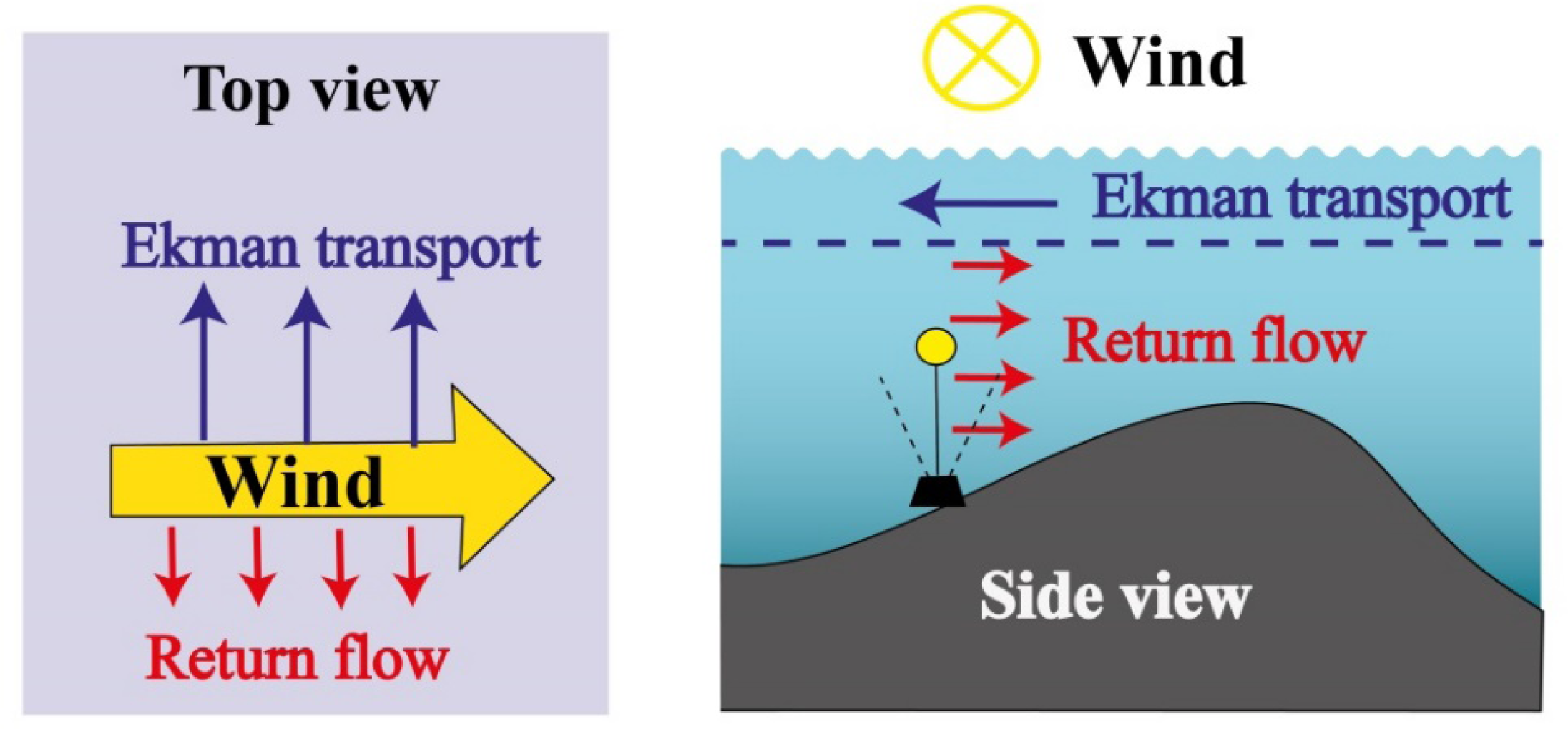

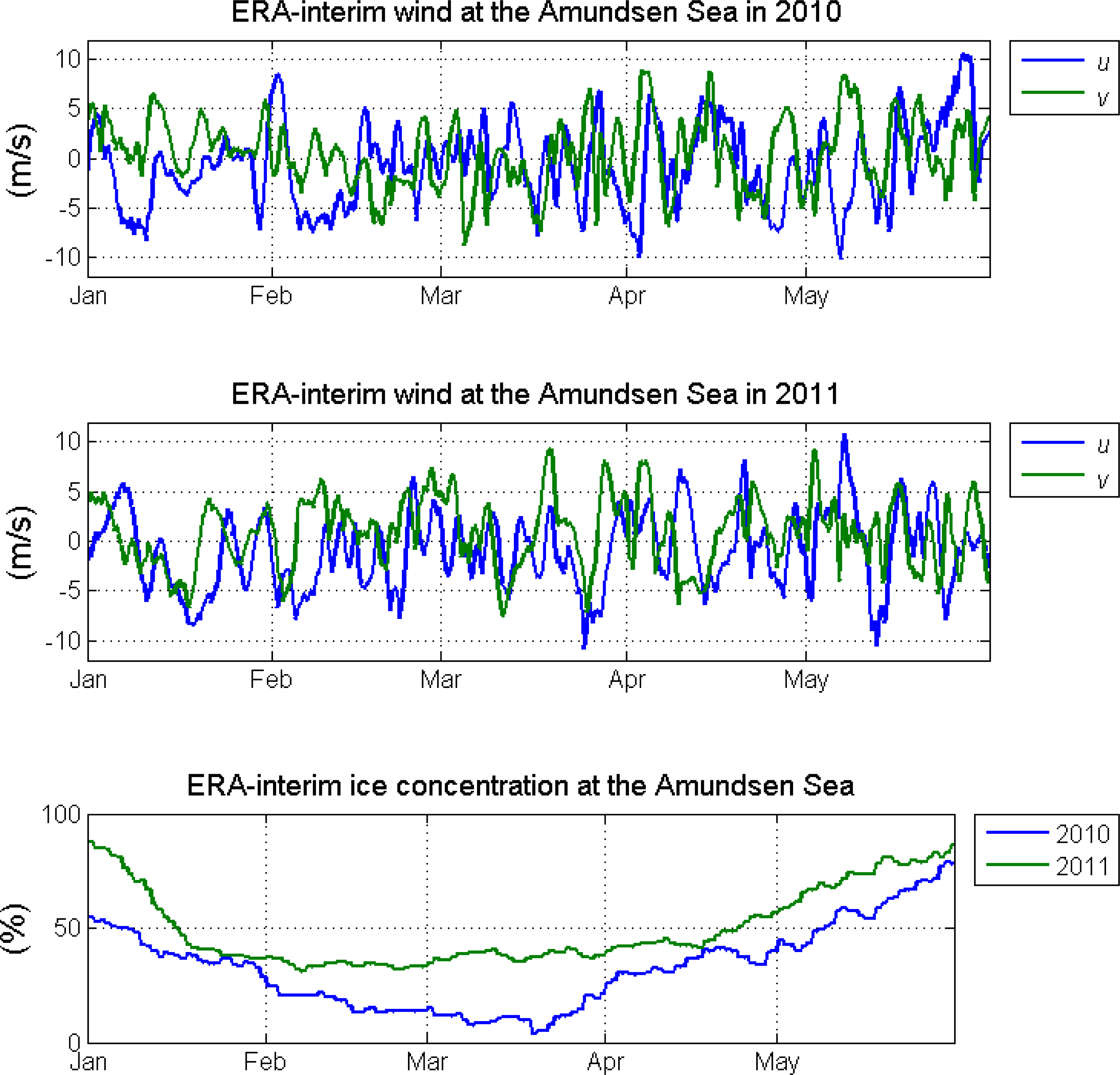

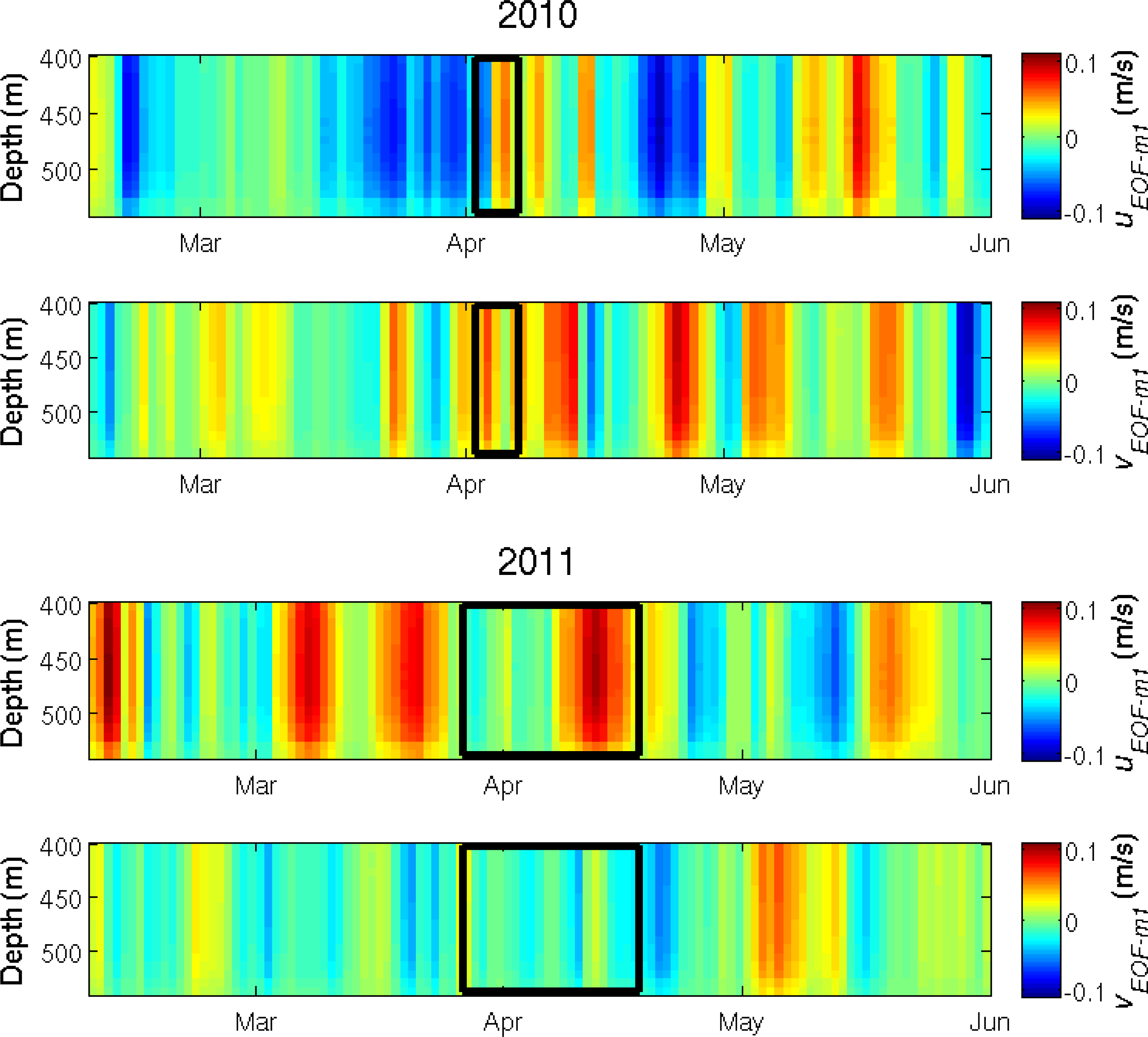
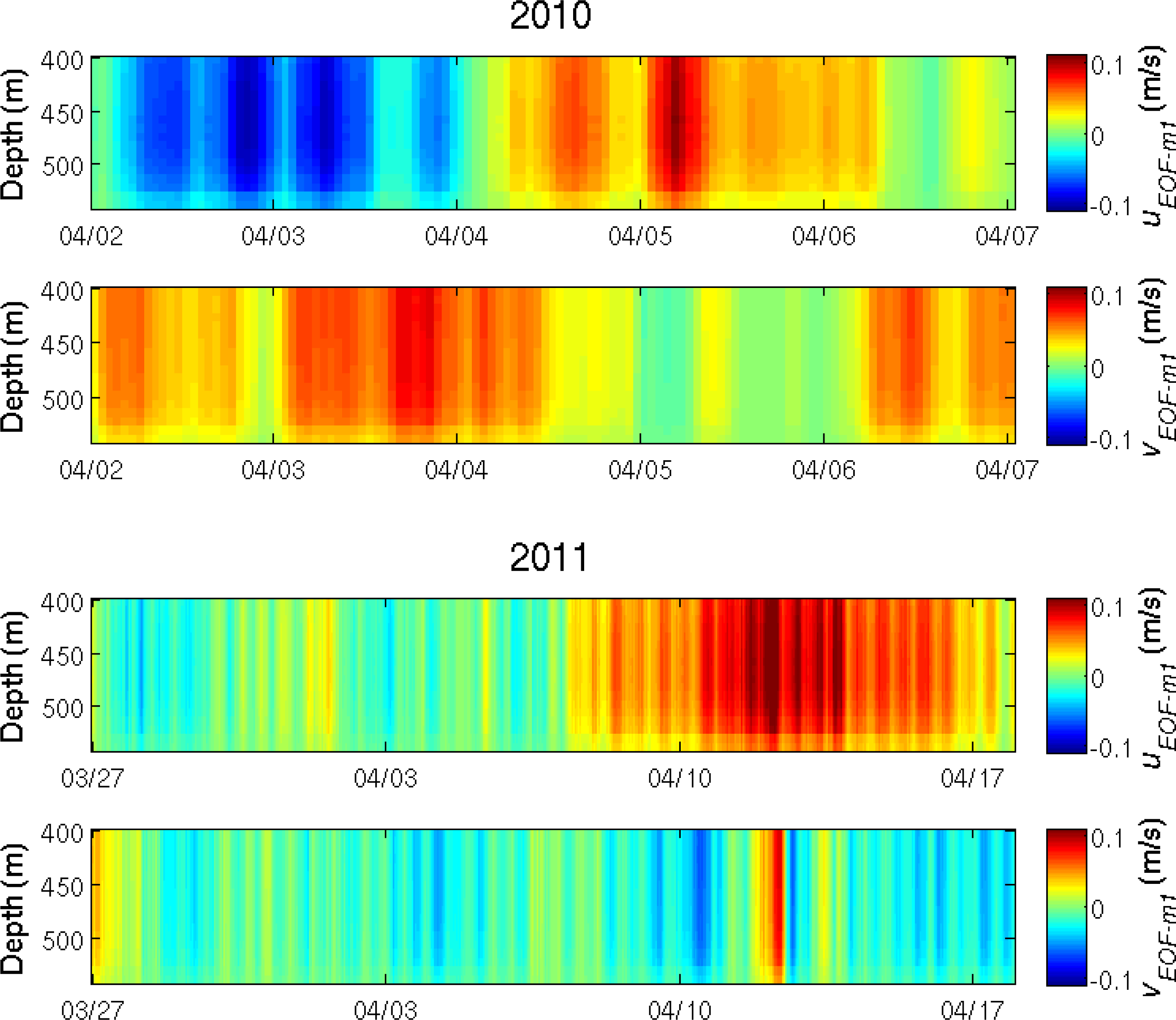
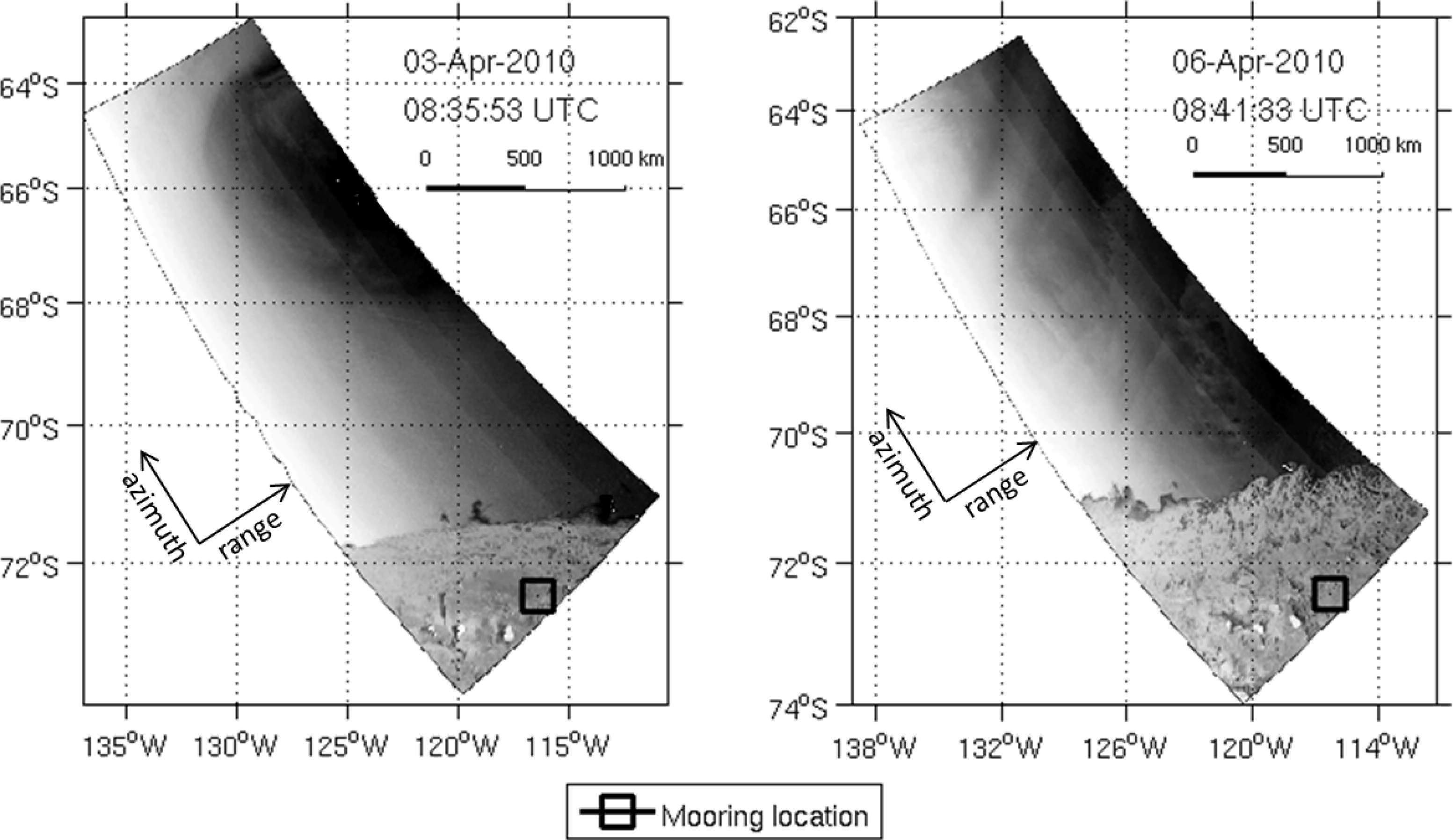
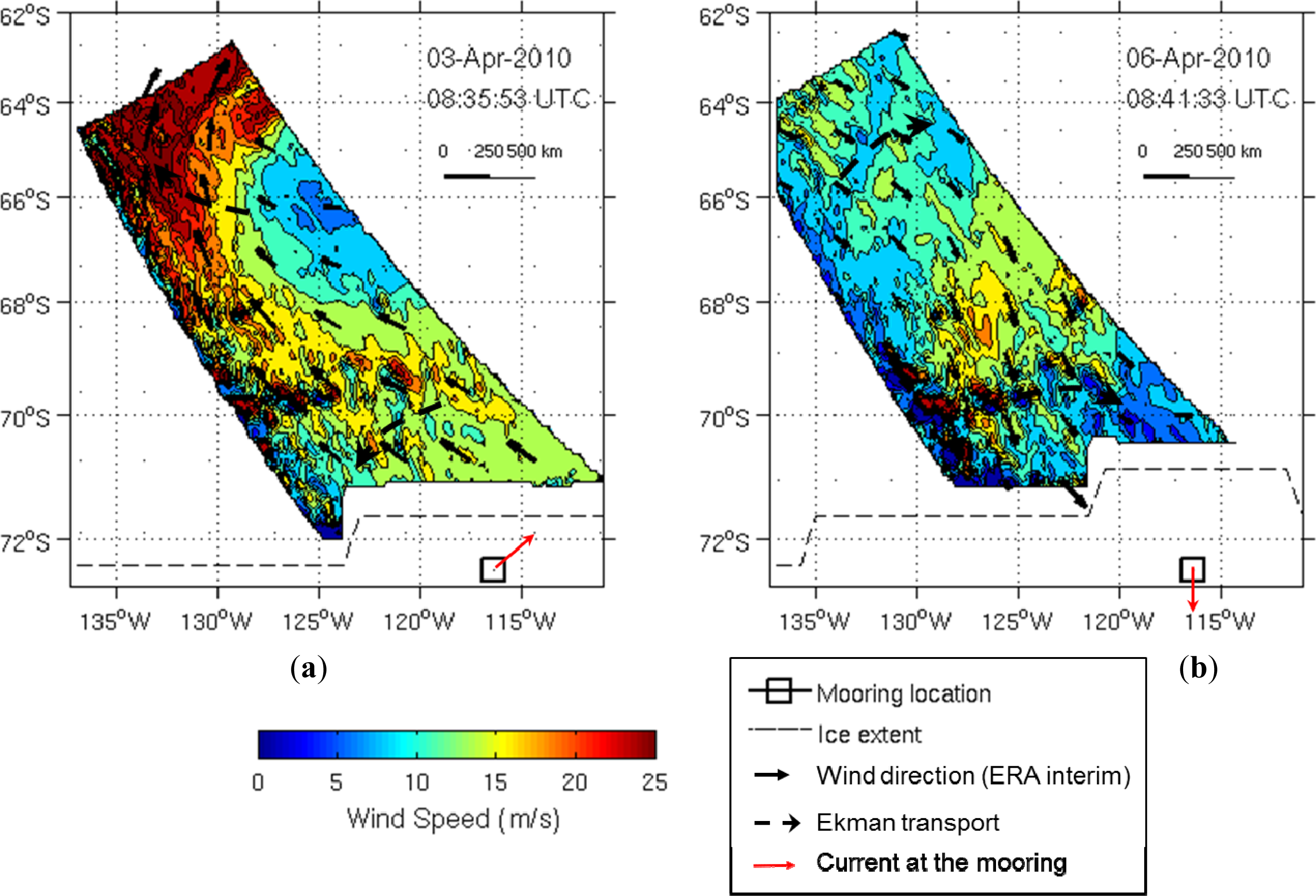
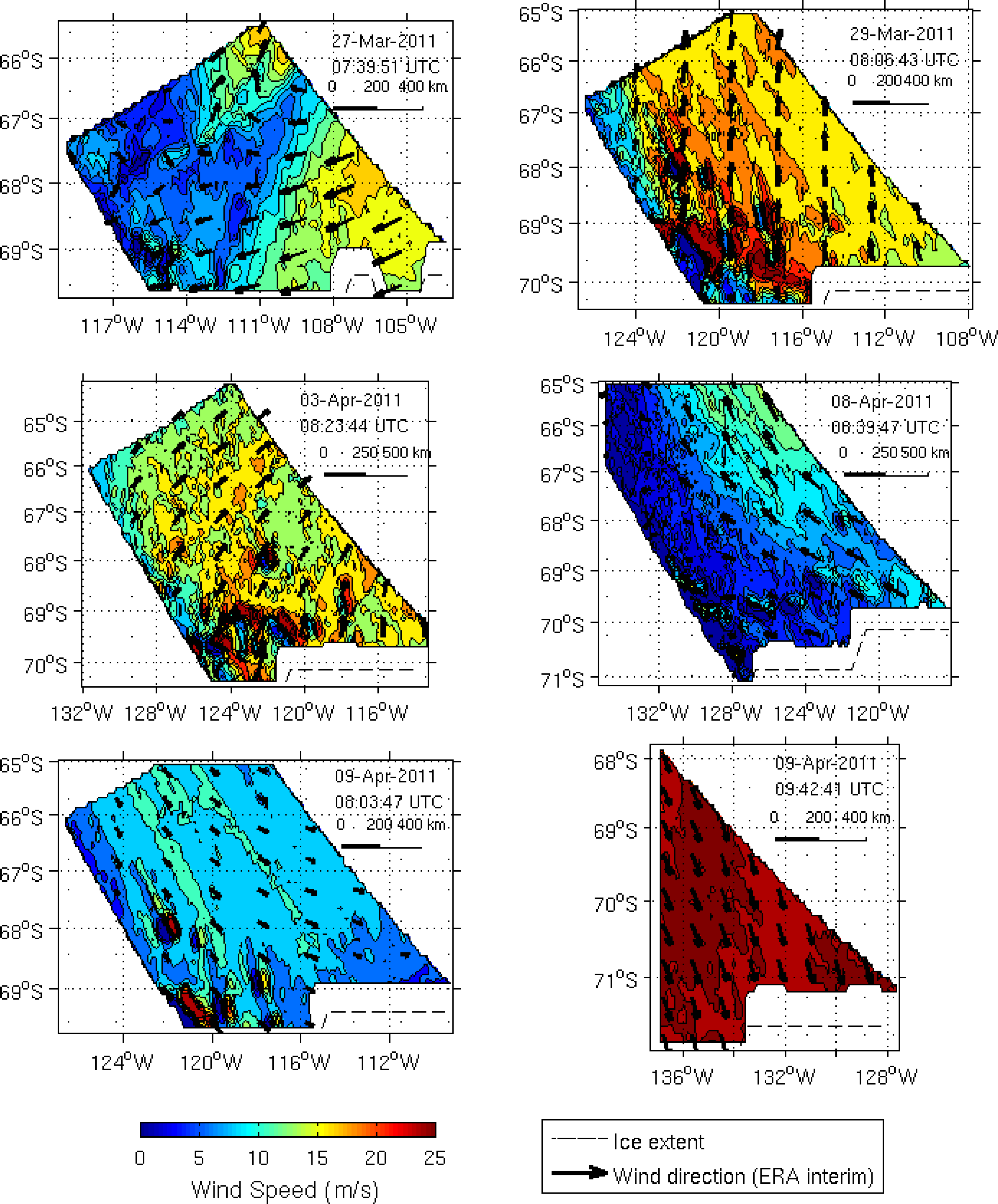
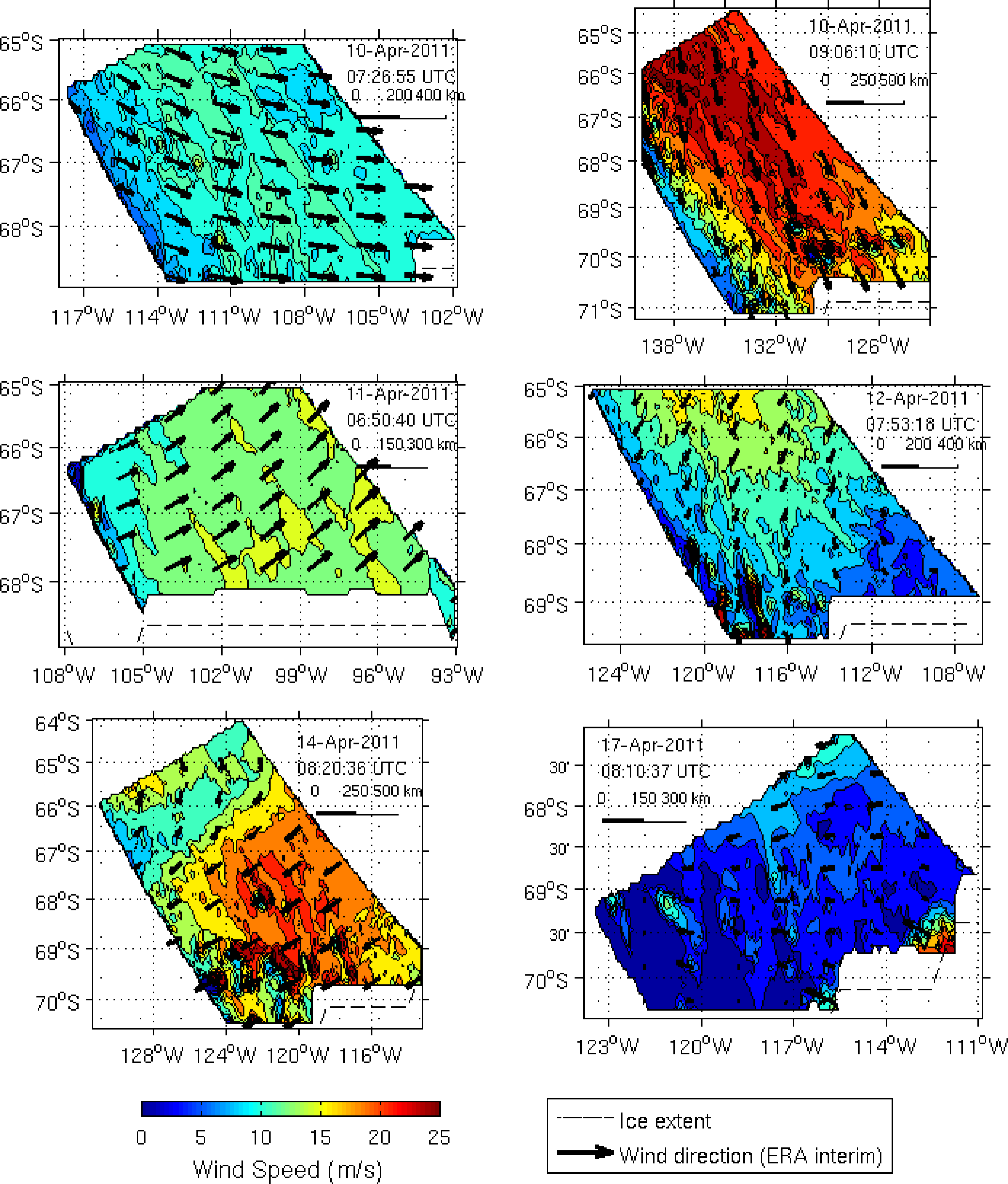
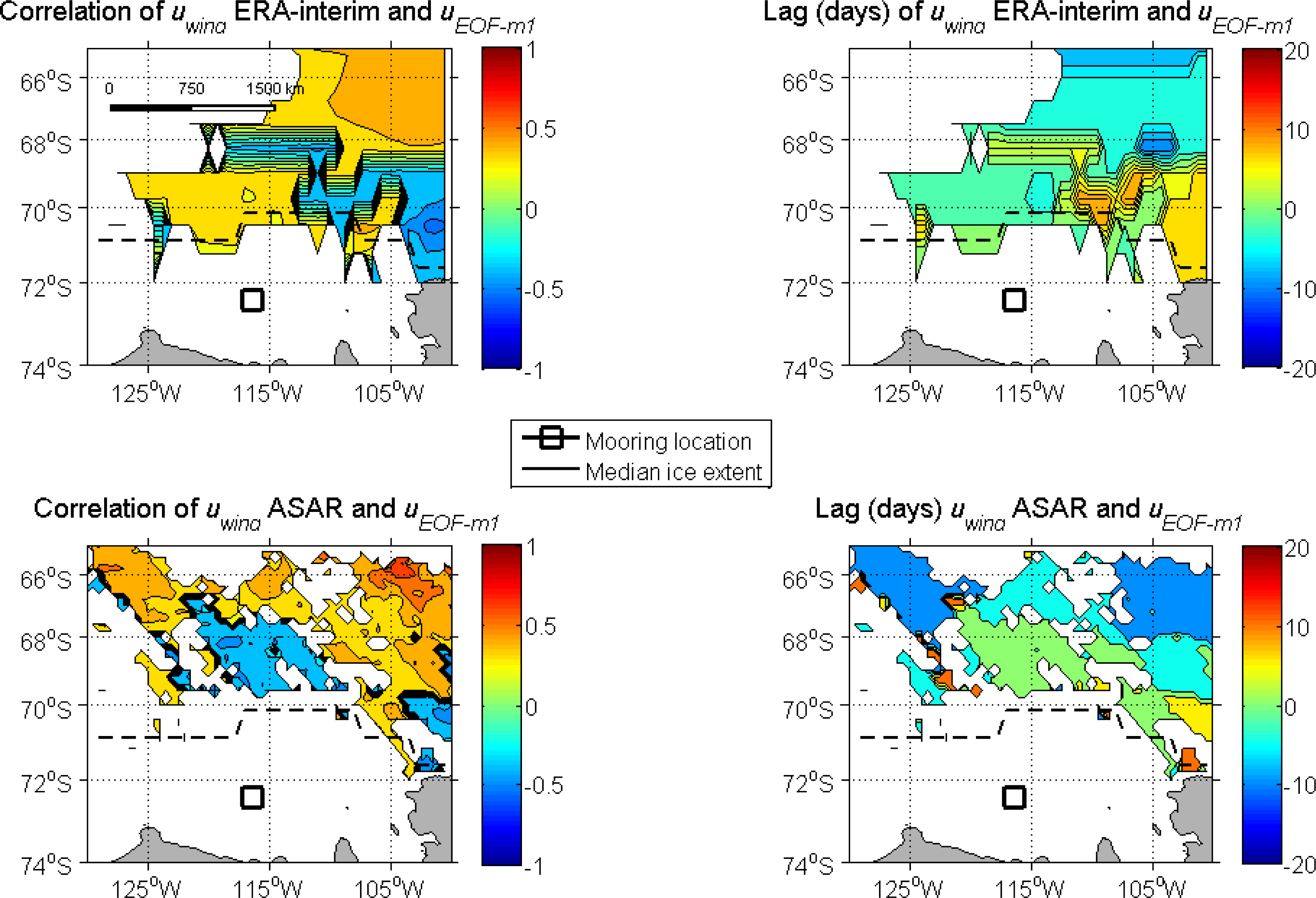
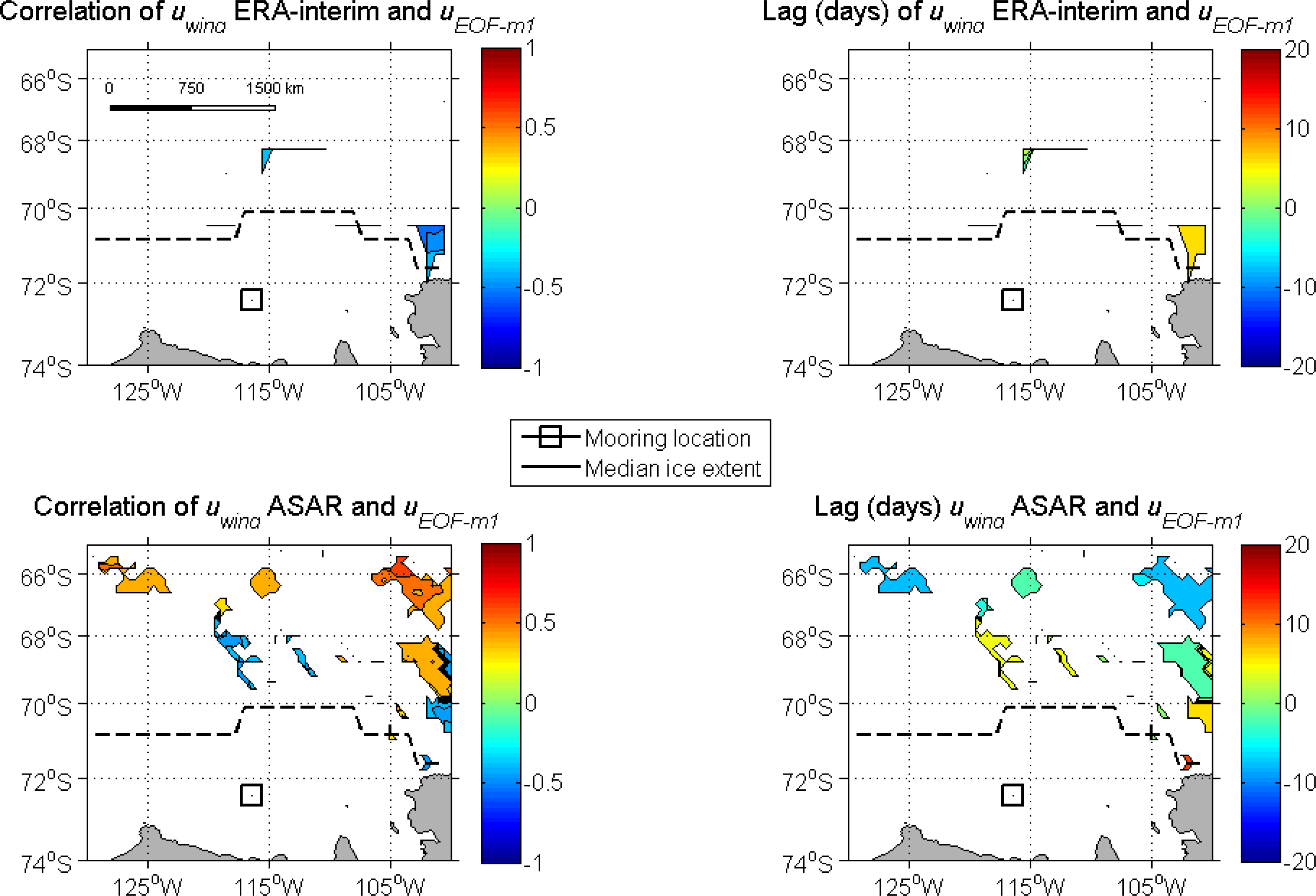

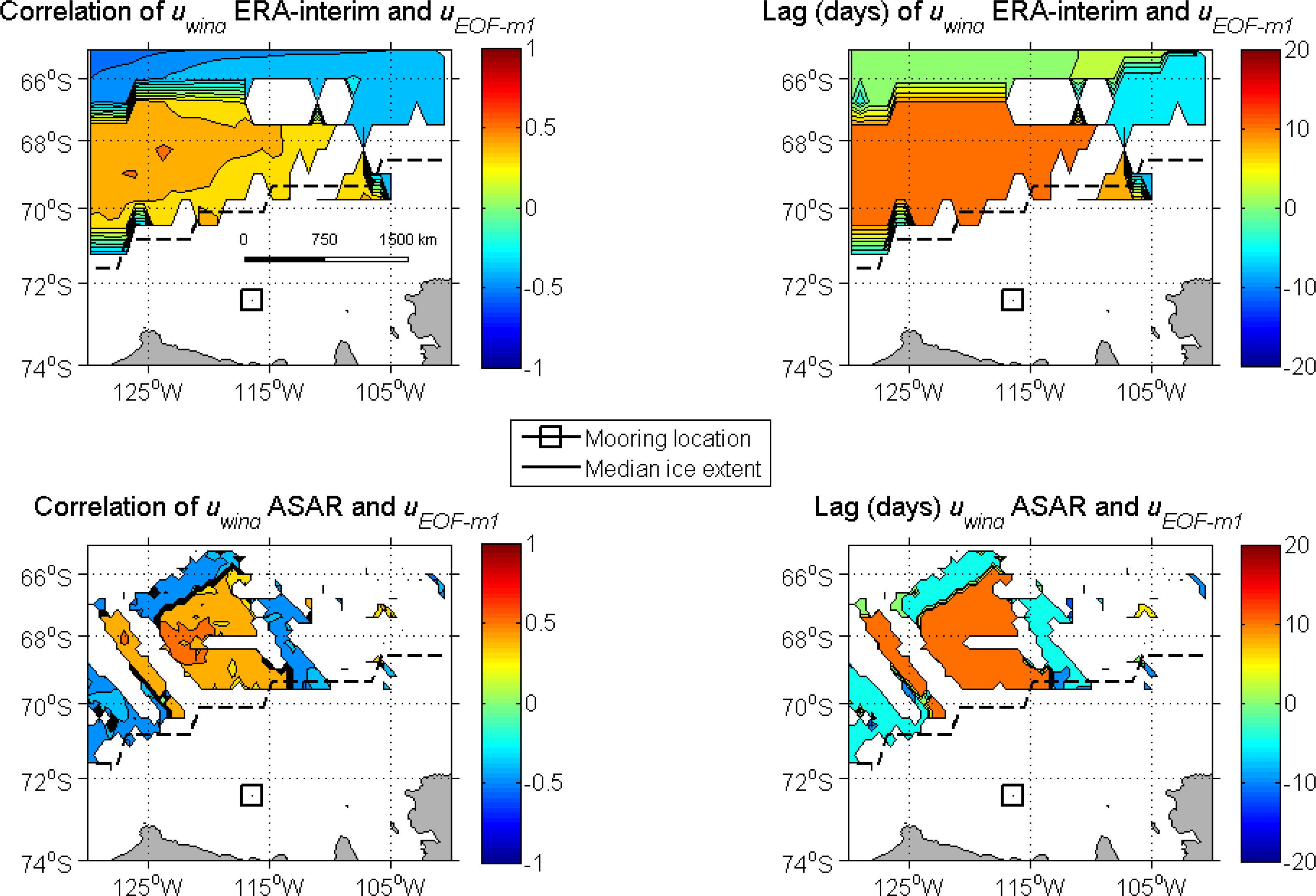
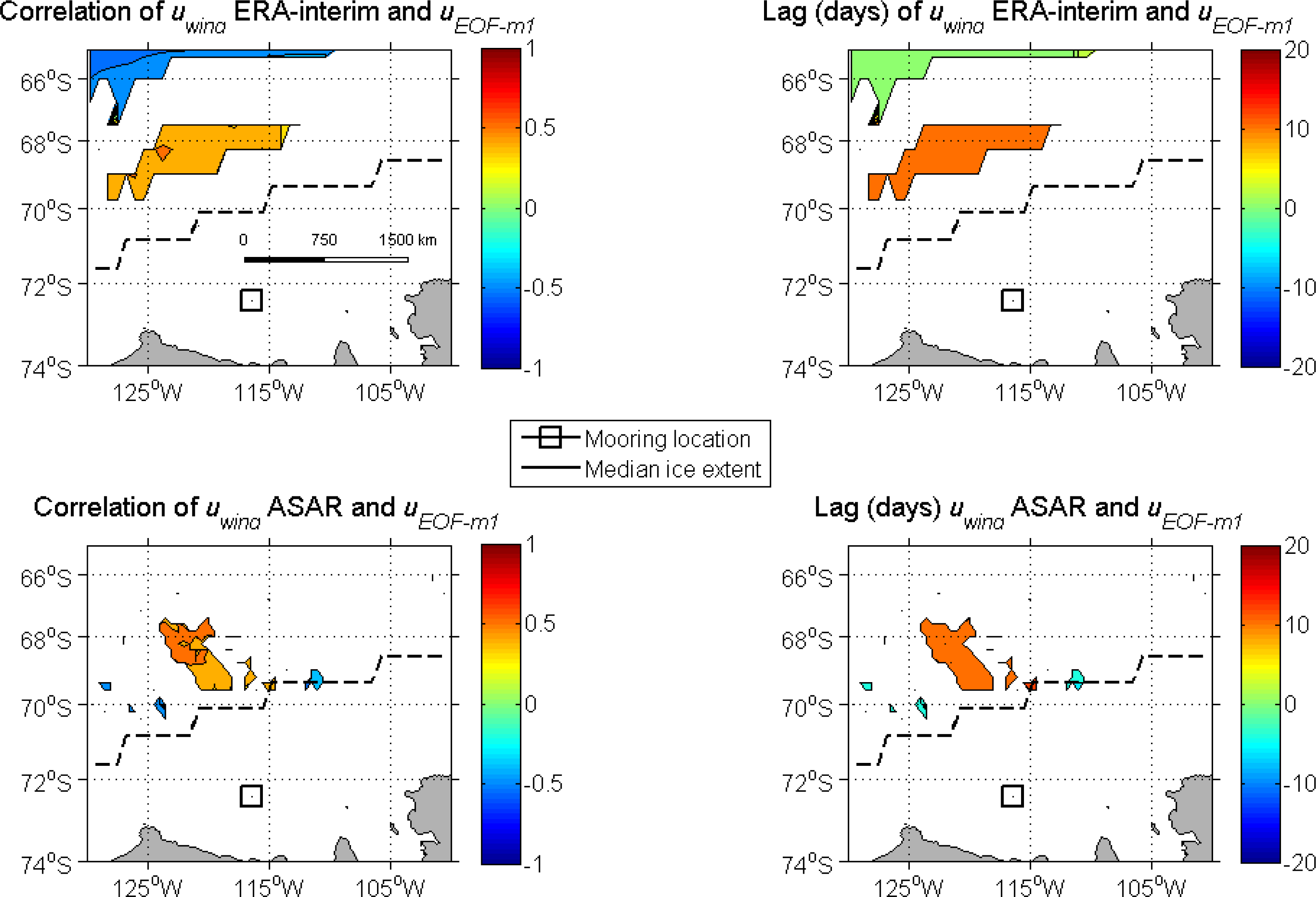
© 2013 by the authors; licensee MDPI, Basel, Switzerland This article is an open access article distributed under the terms and conditions of the Creative Commons Attribution license (http://creativecommons.org/licenses/by/3.0/).
Share and Cite
Carvajal, G.K.; Wåhlin, A.K.; Eriksson, L.E.B.; Ulander, L.M.H. Correlation between Synthetic Aperture Radar Surface Winds and Deep Water Velocity in the Amundsen Sea, Antarctica. Remote Sens. 2013, 5, 4088-4106. https://doi.org/10.3390/rs5084088
Carvajal GK, Wåhlin AK, Eriksson LEB, Ulander LMH. Correlation between Synthetic Aperture Radar Surface Winds and Deep Water Velocity in the Amundsen Sea, Antarctica. Remote Sensing. 2013; 5(8):4088-4106. https://doi.org/10.3390/rs5084088
Chicago/Turabian StyleCarvajal, Gisela K., Anna K. Wåhlin, Leif E.B. Eriksson, and Lars M.H. Ulander. 2013. "Correlation between Synthetic Aperture Radar Surface Winds and Deep Water Velocity in the Amundsen Sea, Antarctica" Remote Sensing 5, no. 8: 4088-4106. https://doi.org/10.3390/rs5084088



